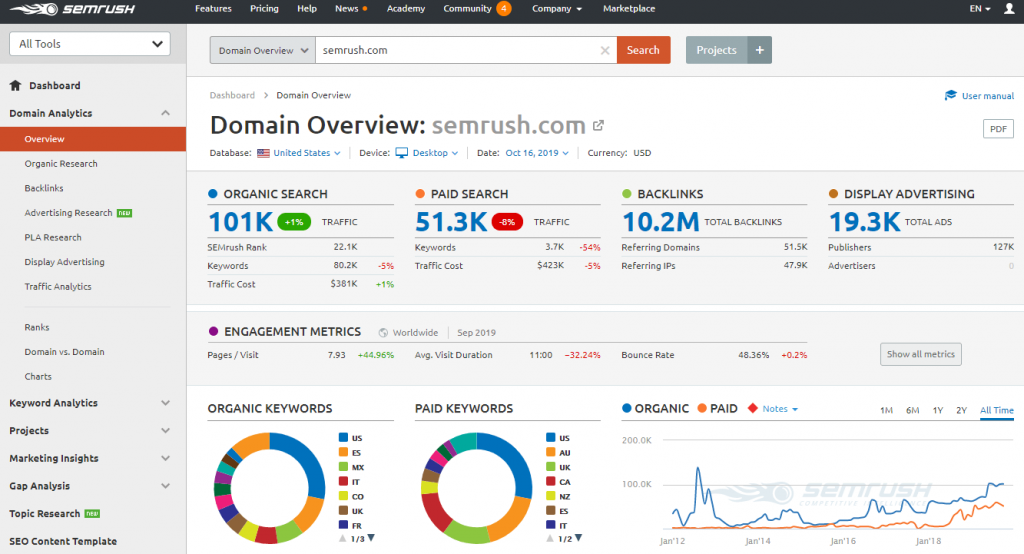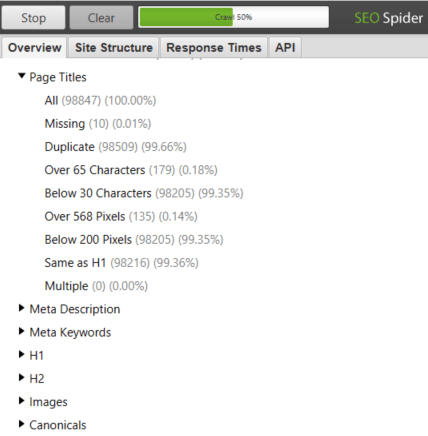Comparing your own website performance versus your competitors might sound like a task that would distract you from other, more important business initiatives. After all, in the words of every sports coach ever, “We can only focus on improving ourselves each day instead of worrying about our opponents.” Would that not hold true with a business in the digital age, too?
While that sentiment might be an important reminder to keep your vision clear, analyzing yours and your competitors’ website performance is useful in order to better understand how you can improve your business’ digital presence. It’s less “worrying about your opponent” and more “learning from the success and mistakes of others.”
That’s because it helps in a variety of ways. For one, it provides perspective on how your website is performing compared to competitors— where your weaknesses and strengths lie, specifically. This helps you understand which parts of your strategy need improvement, and which parts can be used as an example for success. Furthermore, it also gives you benchmark data for your digital presence within your industry and, armed with both pieces of knowledge, you can lay out a better plan for improving your digital presence moving forward.
But Where Does SEO Come Into Play?
Besides helping you to understand yours versus your competitors’ metrics, this analysis also highlights how your website ranks organically when search engines come into play. That’s because the process is like an inward-facing SEO audit, just for your competitors. To learn more about SEO auditing, check out our past posts that go more in-depth on on-page and off-page audits.
When conducting a competitor analysis, there are a number of different digital marketing metrics worth analyzing. This includes content-based metrics like:
- Total number of ranking keywords
- The ranking of specific keywords
- Usage of meta tags (such as title tags, description tags, header tags, and image alt tags)
On a purely quantitative level, you can also analyze:
- Organic traffic over a certain period
- Number of indexed pages
- Domain authority
- The number of referring links and domains
Furthermore, you can also analyze the technical setup of their website, like:
- Robots.txt page
- Sitemap
- Site speed
- Mobile responsiveness
- And so on
These metrics all are valuable depending on what you want to focus on, so it’s worth checking them all out.
Tools for the Job
To complete a competitive analysis, there are different resources you can use depending on what you want to analyze. For organic keywords, you can use either SEMrush.com or spyfu.com, although it should be noted that the data you get from these sites are not 100% accurate but are deductive estimates. And beyond organic keywords, SEMrush can also analyze backlinks and general content, although these services aren’t available via Spyfu.

Also for analyzing backlinks is the site ahrefs.com. And, for analyzing meta tags and certain technical SEO aspects like canonical tags and response codes, Screaming Frog (screamingfrog.co.uk) has an SEO spider that does the job.

Is that it? (Answer: It could be, but not if you want to get the best results)
We only give that answer because, yes, if you wanted to end your competitive analysis there, you very well could. But that’s ignoring another really valuable audit piece. Which, if there’s a way to enhance your business and its digital presence — why not do it?
What we’re speaking of is analyzing competitors’ social media. When you do a competitor analysis on their social media and their site itself, it provides you with more comprehensive insight. Social media analysis helps you understand how active your competitors are on their different channels and how they are using them to reach current and prospective customers. Knowing this helps you understand optimal social media strategies and how to increase your effectiveness in those channels.
Each social media platform is compared in the relevant ways. But often each platform will have a metric unique to itself. For example, all platform analyses begin with “does your competitor have a page on this platform?” and “is contact info included on their page?” but the specifics beyond that can vary.
A Facebook analysis, for example, will include the following:
- How many likes does your competitor’s business have?
- How many reviews do they have (and what is their average rating)?
- How frequently do they post and how high is their post engagement?
Otherwise, here’s some common platforms and factors to analyze:
- Number of followers
- Posting frequency
- Post engagement

- Number of followers
- Number of tweets
- Tweet frequency
- Tweet engagement

- Number of followers
- Number of posts
- Post frequency
- Post engagement

- Number of followers
- Number of monthly viewers
- Number of pins
- Date of last pin

As you can see, many of the metrics to analyze are the same for each platform (such as number of followers and post frequency), just manifested differently due to the specifics of each of those platforms. Because of this — and the fact that you can do it without software or another website’s tools — analyzing competitors’ social media component is an easy part of the competitor analysis process.
Most importantly, though, it helps you understand who’s doing what and which strategies are the most successful at engagement. Coupled with SEO analysis of your competitors’ websites, it can help you better understand which social media tactics best improve site traffic. When you combine these analytical strategies, you’re now one step closer to making your online presence as effective as possible.
If you would like to learn more about how Fujisan Marketing can help you with competitor analysis for SEO or social media, call us at (844) FUJISAN or send us a message on our contact page.




